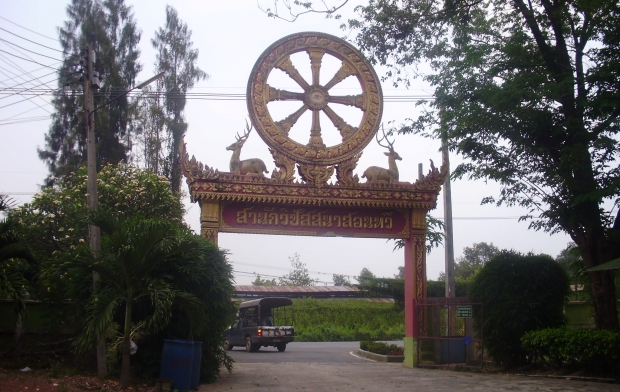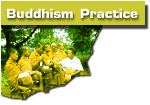 |
| MEANING
OF NAME : |
"Sorn"
is the person who donated the land; "Thawee" is the founder
and head teacher at the centre. |
| ALSO
SPELLED : |
Samnak
Vipassana Sorn-Thawee |
| ADDRESS : |
Bangkla,
Chachoengsao 24110 |
| Tel: |
038-541-405 /084-351-900 |
| DIRECTIONS : |
From
Bangkok, take a bus to Chachoengsao from either Northern (Moh Chit)
or Eastern (Ekamai) bus terminals. Then take a bus toward Bangkla;
get off after about 25 min. (just past KM post 17) where the bus turns
left at Bangkla Crossing; walk across the highway and follow the intersecting
road south 300 meters, then turn right another 300 meters at the sign. |
| MEDITATION
SYSTEM : |
Vipassana, practice
of the Four Foundations of Mindfulness. Techniques using the tool
of mental noting are similar to those taught by Mahasi Sayadaw.
Formal sitting and walking meditation is done 8-12 hours a day.
Mindfulness is applied to all of one's daily activities. One must
practice systematically through waking hours in order to develop
the concentration needed for effective insight meditation. |
| TEACHING
METHOD : |
Daily
individual interviews are considered essential. Meditators report
previous day's experiences, then receive instruction and guidance. |
| TEACHERS : |
Phra
Ajahn Thawee, abbot (Thai; age 76) and a Western nun (Austrian) teach
foreigners. |
| LANGUAGE : |
English
and German are always available. |
| DESCRIPTION : |
LAttractively
landscaped grounds of 24 rai (10 acres) with ponds, trees, and colorful
shrubs. Rice fields surround the centre. |
| SIZE : |
monks
15-22
novices usually 0
nuns 20-30
laypeople 40-50 |
| DAILY
ROUTINE : |
I4 a.m. wakeup;
630 a.m. breakfast;
730 a.m. individual interviews begin;
11 a.m. lunch. Day is spent in or near one's kuti doing intensive
individual practice.
Meditators should
not sleep more than 6 hours.
No group practice is offered. |
| FOOD : |
Good
quality and variety; vegetarian is available on request. Two meals
are served in the morning. Meditators eat mindfully in their kutis.
The community eats as a group on special occasions. |
| ACCOMMODATIONS : |
Individual
kutis with screens, fans, electricity, and attached bathrooms with
running water. Older kutis have Thai-style bathrooms; newer kutis
have western-style facilities. |
| WRITE
IN ADVANCE? : |
Yes,
necessary to arrange accommodations. |
| OTHER
INFORMATION : |
Only individual (solitary)
practice is offered at present; this isn't for everyone as some
people feel the need for the support of group practice. A Dhamma
hall under construction is expected to open in 1993; check with
the centre then to find out if group practice will be offered. The
usual retreat duration is 50 days; 20 days is the minimum recommended
stay. Visits of less than 2 weeks don't allow enough time to develop
insight and won't be allowed. Meditators observe 8 precepts, keep
noble silence (especially not to talk about one's meditation experiences
with others), wear loose-fitting, modest clothing, and abstain from
reading, writing, or listening to radios. A blanket or light sleeping
bag is needed in the cool season. A 50 baht (US $2) daily fee covers
running expenses. |

